Sometimes when I start talking on-air about all of the parameters and phenomena that influence the weather in South Mississippi, I wonder if people at home think I sound like this:
You’re going over people’s heads, Nick
Low-level jet, helicity, wind shear, CAPE, PWATS, SigTor values, the list goes on. I’m sure it can sound like a bunch of gibberish, at times. I get that. I’m may be a bit blind, visually speaking, but I’m not blind to that.
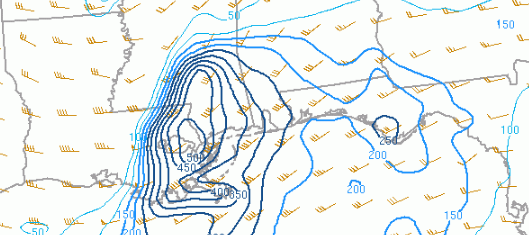
The This-Sounds-Like-Gibberish feeling some folks may get is probably why forecasts by most meteorologists, weather forecasters, weather anchors, and weather presenters on television are so simplified. Sometimes all of that “weather jargon” is hard to follow when you aren’t working with it every day.
So, television news consultants (people paid to tell us how to better connect with an audience) encourage people on TV to make the forecast as simple as possible. They discourage anything scientific, suggesting instead everything elementary – literally. Often times they say, “explain it to people like you would explain it to a 4th grader. And I can follow the train of thought. Most viewers across the United States aren’t sitting down and watching the forecast intently. Most are busy making dinner, while texting their friends and playing peace-maker between children.
So instead of saying, “the low-level jet may help wind shear overcome the lack of instability, meaning severe storms are still possible overnight” it might be easier for people to hear just “storms overnight.”
This simplification, though, leaves a lot of things unexplained. Explaining nuances in the forecast may help people make the proper risk assessment. And, it may lead to people forgetting that a lot of math and science goes into forecasting the weather – and getting it right. And that is important.
Dumb it Down
The biggest critique I get from consultants is that I talk to much about science. I’ve been told that people just want to know if it is going to rain or not. No one cares why. Plus, if I educate viewers too much, then they won’t need to watch me for a weather forecast.
I don’t disagree, to a point, with the first part. I am certain that -some- people probably think I sound like the Dawn Lazarus character in the video I posted above. When I discuss the intricacies if the atmosphere and how it changes what to expect it may even sound like I’m speaking a foreign language. .
Hap!
But South Mississippi isn’t, let’s say, West Pennsylvania. The weather in south Mississippi will kill you if you don’t understand what is happening and respect it. The weather in Pennsylvania will simply disrupt your commute.
They have snow flurries. We have hurricanes.
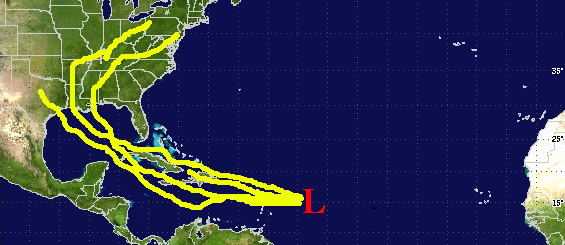
When the weather is “bad” in West Pennsylvania, it looks and feels much different than when it is not. For example, if it was 69 degrees and humid in West Pennsylvania on a random day in February, people would likely recognize a difference and be more alert to the weather.
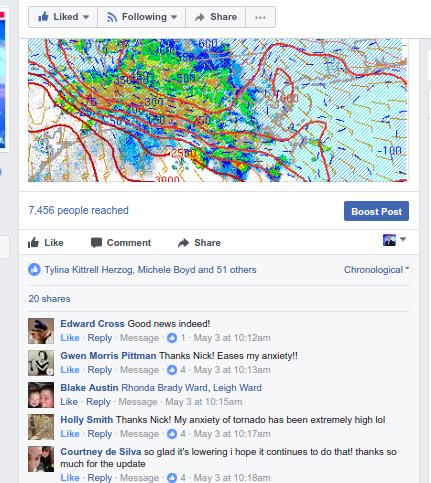
When the weather is “bad” in South Mississippi, it looks and feels no different than any other day. Warm and humid in February for South Mississippi isn’t uncommon. The 2016-2017 winter we have seven consecutive days of 69 degrees or warmer with no threat for tornadoes. The day before that streak started? It was 70 degrees, with thunderstorms. Oh, and two tornadoes.
So, delineating between “bad” days and “not bad” days is important. And simply telling my viewers “Today won’t be bad” isn’t enough. Particularly when it looks and feels the exact same as it did the day an EF-3 tornado ripped apart their town.
In a place with a decent percentage of people suffer from severe weather anxiety, just saying it is a “no biggie” day doesn’t cut it.
To the second point about concerns that I am over-educating viewers, I won’t really dive into. That is its own interesting can of worms. One that I probably don’t have enough time to open up. But know that the over-simplification of forecasts isn’t for your actual benefit. The old adage, “give a man a fish, feed him for a day. Teach a man to fish, feed him for a lifetime” would seem to apply, though. But, in this case, the fish isn’t free.
And I’ll leave it at that.
We ain’t graduate from school, them big words ain’t cool
The biggest criticism I receive from viewers is: “Just do the weather.”
I probably get one or two emails per month with that exact phrase in it. I’ve never fully grasped what that means. To me, I am doing the weather. A lot of weather! But I think it goes back to what the news consultants suggest: Just tell people what to wear.
But, I’m about to disappoint folks: I refuse to offer hand-holding forecasts.
Call me crazy but I tend to believe that viewers are smart, capable, and can handle their own affairs without me telling them how to dress.
It is patronizing, in my view. I feel that viewers don’t need someone to treat them like a toddler.
There is a reason I balk at showing the “What to Wear Weather” forecasts and you haven’t seen my “Will You Need an Umbrella” graphics. You’ll never see it while I’m on TV. Perhaps I’m wrong, but I think viewers are smart enough to figure out what to wear. And if they need to stay dry.
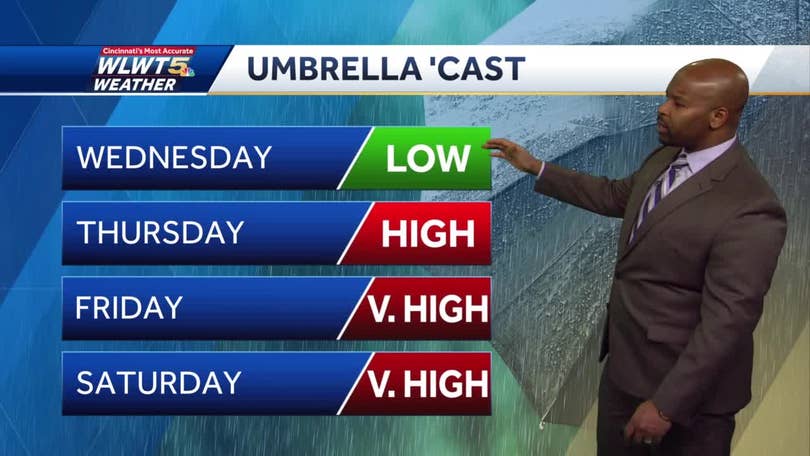
Are these graphics cute? Sure.
Are they fun? For some people, sure.
Do they feel gimmicky? Absolutely.
Is any of it helpful to the masses? I would argue, no.
That’s not to say the weather folks that do that are bad people. I would just argue if they are doing those types of things are doing it for themselves, and not for you. On many levels.
The easiest one to explore is the subjective versus objective debate, I suppose. I rarely use an umbrella. To me 70 and sunny is warm. Other people love umbrellas and think 70 and sunny is chilly (my girlfriend, for example). It depends on who you are, where you grew up, and your personal thresholds.
A day with rain at 65 degrees is shorts and long sleeve shirt, no umbrella. To my girlfriend it is jeans, a jacket, and an umbrella.
The subjective nature of handling benign weather is why getting on television and telling people there won’t be “bad weather” doesn’t adequately serve viewers. What is “bad” weather? To me “bad” is an EF-4 tornado or a Cat 3 Hurricane. To others “bad” is loud thunder and heavy rain.
And the number of people in South Mississippi with Severe Weather Anxiety from the countless number of severe weather events that have run through the region since Katrina in 2005 means that “bad” weather is not only subjective, but has a very low threshold.
Underneath that, there are many other reasons for showing such simplistic graphics. Some folks have been told to by management or consultants and others do it to add ‘fun’ to the forecast. And if meteorologists are being told to show it that – again – is no longer for you. But to appease the higher ups.
And if this is an effort to add something ‘fun’ that is fine. But, to me, to be entertaining without informing is the lowest hanging fruit of performance.
They’re telling me that they don’t feel you
All of this is to say that I feel like small words, with no context, don’t help.
If “bad” weather days and “not bad” weather days look and feel pretty similar, and telling people “no bad weather” doesn’t help viewers with severe weather anxiety, and if what constitutes “bad weather” is subjective, then why do it?
Sure, I won’t win over everyone. Many people appreciate simplicity.
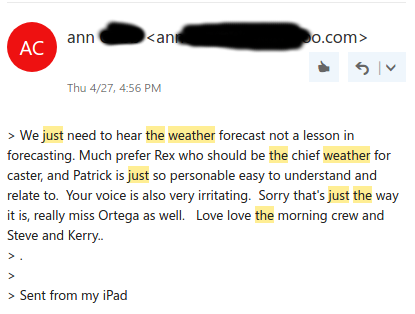
But there are so many qualifiers and hurdles to clear when being simple. A simple forecast doesn’t adequately inform anyone. It minimally informs everyone.
To me, it is more useful to be more informative.
Seems crazy, but I would rather inform and educate my viewers. I want them to have the knowledge to make their own sound decisions – in any weather situation. I would rather my viewers know how to look at a radar and find a tornado, so they can take the necessary steps to protect themselves.
I know that it might sound like Dawn Lazarus, at first. Seeing someone get on television and start talking about geopotential heights, height falls, shear, 500 millibar temperatures, 850 millibar dewpoints and one kilometer helicity seems foreign.
And that’s okay!
But I do it because it serves my entire audience. No subjectivity. It offers a complete picture, explaining why today is different than last time when a tornado destroyed the town. And, hopefully, it helps eases the stress-levels of those afflicted by severe weather anxiety and PTSD from past severe weather events. And maybe some folks learn some cool stuff about the world above them.
They’re trying to graduate from school, they’re starting to think smart is cool
There is another reason that talking about the science is important – and it has nothing to do with giving people an accurate forecast.
Kids watch. They actively watch, too.
The bright colors on the maps, the corny jokes by the person on the air, and the pleasant demeanor that most weather people convey attracts kids to listen.
This is the same reason why I am constantly trying to put scientists of all shapes, colors, and genders on TV Kids watch. Visibility matters. Something as simple as a little girl seeing someone that looks like her doing Science is so valuable. Without consciously recognizing it, that little girl knows she can do Science, too.
Why starve kids of knowledge?
Talking about the math and science that goes into determining a forecast can get kids interested in the STEM fields at a young age. And this is particularly important for young girls and minorities.
Why limit their potential? Science is important to children’s growth.
You ain’t winning no awards
Lupe Fiasco (some of you fans may have caught all of the references to his music in here) is right. In his song, “dumb it down” he raps about how the music industry tried to make his music dumber to appeal to the masses.
That is something I deal with constantly, too. Perhaps it has made me a bit cynical.
Much like Lupe, I’m not going to win awards on my current path, either. While my style may not line up with what a lot of other meteorologists, weather forecasters, weather anchors, and weather presenters on television are doing, that’s fine. If consultants loathe working with me, I won’t lose sleep.
In the song by Lupe Fiasco, it ends with a cut saying, “They told me I should come down, cousin. But I flatly refused, I ain’t dumb down nothing.”
I feel the same way. I would rather fail while trying to make the world better, than succeed at making it worse.
And as Dawn says, “that’s a that, at your neck in the woods.”

